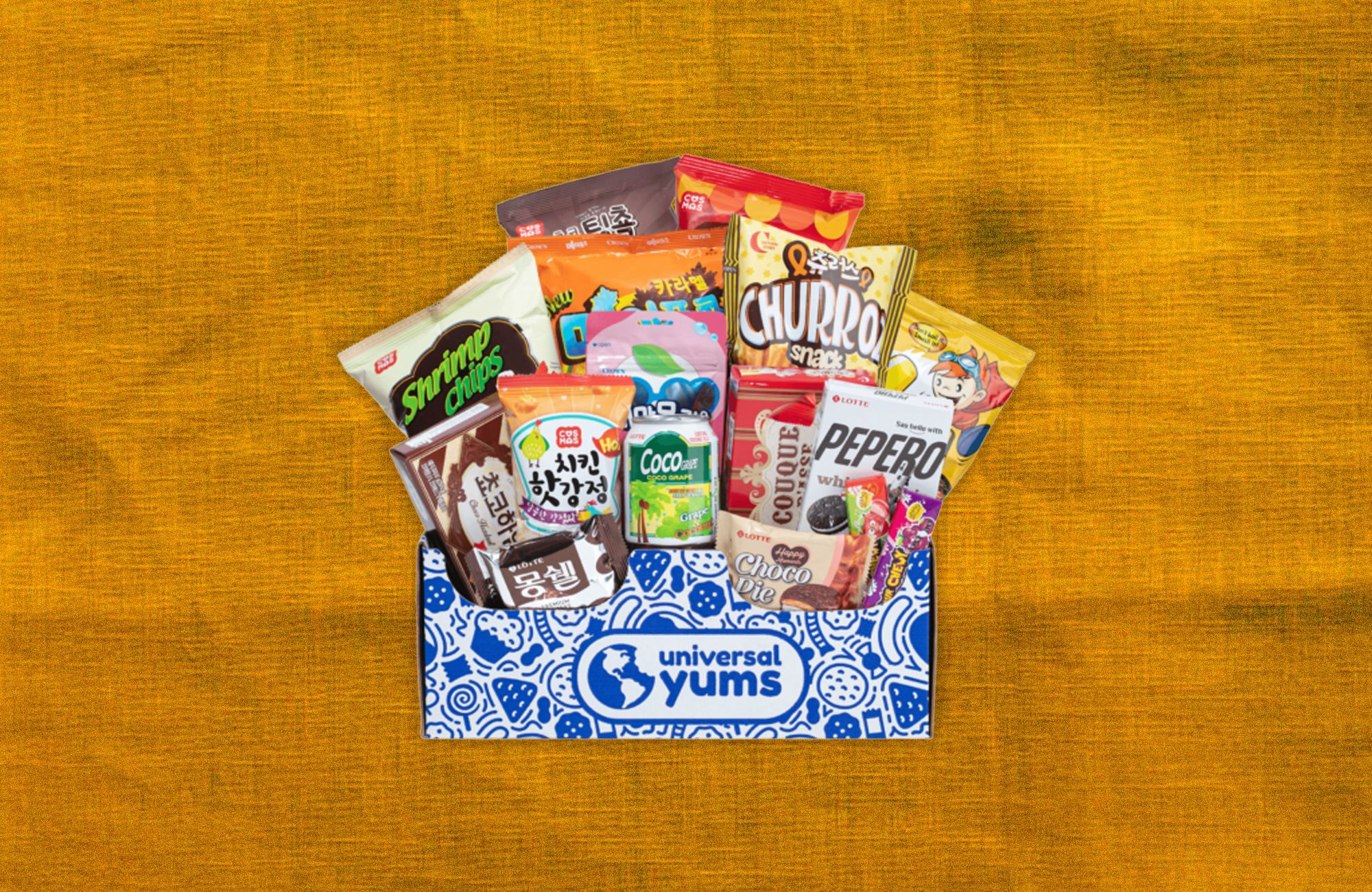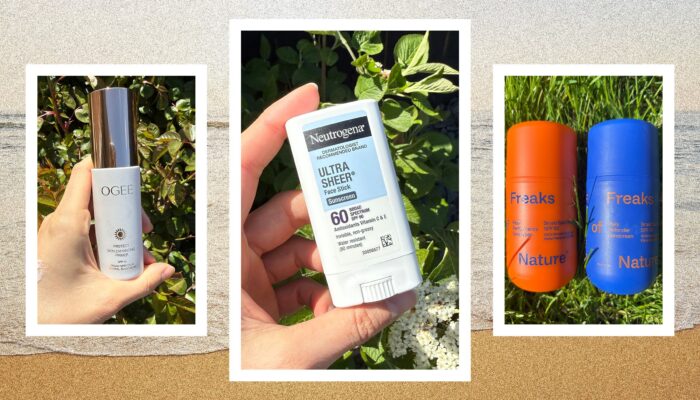All products featured on WIRED are independently selected by our editors. However, we may receive compensation from retailers and/or from purchases of products through these links.
The Best Box for All Ages
KiwiCo Kiwi Crate
Best Puzzles
Highlights Puzzlemania Book Club Subscription
Best Coding Box
Lingo Subscription Box
Best Snack Box
Universal Yums Snack Box
Rather than give your kid a big, expensive present once or twice a year, why not surprise them with subscription boxes for kids once a month? I have a 7-year-old and a 10-year-old, and they are thrilled when a package arrives that isn’t bills, replacement chargers from Amazon, or Garnet Hill catalogs.
Subscription boxes for kids can be useful supplements for remote learning. Most are consumable, so your kid can have a treat that won’t be left to molder in a corner of a playroom until they’re 25. They’re also handy to have around the house if you can’t send your sniffly kid to school or a big indoor birthday party, and as a bonus, they’re usually affordable. I tested some of the subscriptions on this list, like the KiwiCo Archery Set ($34), and I bought others for my kids and their friends. These are our favorites. Be sure to check out our other buying guides for kids, including the Best Strollers, the Best Kids Bikes, and the Best STEM Toys.
Updated May 2025: We added the Lingo box, the Highlights Puzzlemania box, and updated information on the Kiwi box.
-
The Best Box for All Ages
We subscribed to Kiwi Crate for so long that the company sent us a cautious email asking whether it was OK that we were getting repeat boxes. We paused for some time until I recently checked back in to get the archery set ($34). It reaffirmed how amazing this company is. The box is reasonably priced. The instructions are clear enough for a 7-year-old to follow. The pieces are easy for little fingers to manipulate, and the final project is delightful—an archery set that shoots little balls at a target! This entertained my 7- and 10-year-olds for an entire afternoon, until our dog thought we were having too much fun and ate the bow.
Kiwi Crate offers various gift boxes for all ages, from toddlers under 2 to teenagers. You can choose boxes for specific interests, such as music, mazes, holiday crafts, and robots. Kiwi is noted for its careful curation—the projects are fun and age-appropriate, but it doesn’t break my kids’ hearts when they inevitably lose or destroy them. Each box also includes clear instructions that require little parental supervision. A Kiwi Crate is the perfect way to entertain and educate a kid on a summer afternoon.
-
Best Puzzles
Highlights
Puzzlemania Book Club Subscription
My kids are 7 and 10, and—I did not know this, did you know this?—they are obsessed with puzzles of all kinds. This is great because they are at the age when they need to practice reading, and there are only so many times you can force them to reenact The Lord of the Rings trilogy. Highlights also offers a few different reading and activity boxes, in addition to the classic children’s magazine. My kids and I tried the I Can Read book club ($15/month) and the Puzzlemania subscription ($5/month). Puzzlemania was delightful.
Each puzzle book is 32 pages and has a wide variety of puzzles, including sticker puzzles, word searches, Mad Libs–style storytelling, and riddles. We spent several afternoons filling in sticker puzzle pieces and playing the Highlights version of Sudoku. They both loved this puzzle pack so much that I bought the Highlights Great Big Book of Really Hard Puzzles ($13), which I’m anticipating will keep them occupied for at least one weekend trip or two.
-
Best Coding Box
Lingo was founded by Aisha Bowes, a former NASA scientist, and is intended to bring STEM skills to children who may have been underexposed. That description does not precisely apply to my 7-year-old, but he nevertheless enjoyed this kit. We tried In the Driver’s Seat ($75), which teaches you how to build a backup sensor for a car.
Mileage will vary, and the kit is technically aged for sixth to 12th graders. However, my son and I found it easy to follow along once we figured out how to log in to the Lingo portal and access all the videos on his iPad. We followed the video instructions in the portal to learn how to build circuits on a breadboard using lights and resistors, and program to turn the lights on and off. I particularly like that it doesn’t purport to teach children coding via puzzle pieces or blocks but uses an actual circuit board and a real programming environment. Lingo also offers teacher support if you get stuck. However, I should note that while the kit contains all the hardware components you need to build the sensor, you will need your own iPad or laptop to access the videos and instructions.
-
Best Snack Box
Photograph: Universal Yums
If you love to travel and eat, this is the best box. And kids need to snack every day anyway, so you might as well read and learn while you’re at it. My kids tear into the Universal Yums snack box like a very small pack of very tiny wolves. My colleague Louryn Strampe recommends it in her Best Snack Boxes guide and Best Subscriptions guide. You can choose a small, medium, or large box, and it includes an informative booklet, games, and trivia.
Food is a great way to learn about geography and different cultures. Every month, my kids and I open the box, look at a globe, and do a lot of Googling. We have liked several foreign candies enough to start ordering them separately on Amazon. Even when the snacks aren’t a hit—I got the salted truffle French fries all to myself—my kids always try them and ask a lot of questions about why a country is called the Kingdom of Butterflies and when we can visit.
-
Best Book Club
If you and your family are struggling to find reading material for your required 20 minutes of reading per day for school (that’s not Wings of Fire or Bear Snores On over and over again), I highly recommend a book subscription. We paid for a Literati subscription until its curation system worked against them. Literati offers book clubs that take newborn children up to their teens. Literati will send your child five books each month. Return any books you don’t like and pay Amazon’s list price for the rest. Every book was a hit, and each kid had to have every book in every box. For the sake of my wallet and our already-groaning bookshelves, I had to stop the subscription.
You can gift a subscription or a one-time, age-appropriate theme box with a card, personalized stickers, and artwork. It’s a great way to expose your children (and yourself!) to wonderful new works of art or literature without dragging them to a bookstore.
★ Alternatives: Over the years, we have tried so many book subscriptions. If you or your child is bilingual, you might want to consider Curio ($58/quarterly), which currently offers themed books and audio reading guides in different age ranges for Spanish, Chinese, and French.
-
The Best Clothing Box
Stitch Fix
Kids Clothes Box
As my kids have gotten older, shopping for their clothes has become a misery. One child has sensory issues. He hates stiff or tight fabrics, clothes that are too fuzzy, dumb graphics, certain colors, and all jackets. The other is a budding fashionista who stands in front of her closet, just flinging things to the ground. Whenever I find a sweatshirt they will wear, Target immediately discontinues it and my cycle of living hell continues.
Stitch Fix’s Kids Clothes Box is expensive, but you can start or stop your subscription as needed. You enter your child’s age and size; color preferences and patterns to avoid; themes that they like; features to avoid (no crop tops); activities they like; and most importantly, budgets for every category. Stitch Fix sends you a box and you and your child keep what you like and send back the rest. My now 10-year-old loved everything. Given that I set our budgets very low, I’m not surprised that many of these garments simply did not hold up. However, we did get many months of hard wear out of certain beloved sandals and shorts. This is an easy way to update wardrobes for kids who grow out of everything and are starting to voice their own preferences.
★ Alternative: I also tried a box from Kidpik (starts at $100) for my 7-year-old. Kidpik’s selection is so appealing and stylish that my husband asked if the clothes came in his size. The clothes are much sturdier than the Stitch Fix selections. However, the selection is much smaller, and my son rejected half the clothes that Kidpik sent. Stitch Fix’s extensive style quiz ensures that there’s at least a fighting chance that your child will like any given garment.
-
Best for Preschoolers
We received a Lovevery kit when my son was 2 years old. Now he’s 7, and I still find the company’s sturdy, Montessori-inspired toys in use around our house. Lovevery (pronounced “love-every”) promotes what it calls stage-based learning. At each stage of development, babies need different (beautiful, colorful, durable) toys to help them develop different parts of their brain.
It’s pretty cute to term every stage with a different focus, like The Inspector or The Explorer, although I have to admit that I’m not so sure my son enjoyed experimenting with gravity that much more at 10 months than at a year old (he still dropped things on the floor is what I’m saying). My much older daughter also enjoyed arranging giant, gorgeous felt flowers just as much as my son did. If you’re a special person in a little one’s life and want to send them attractive and sturdy toys to pass down to others, this is the best toy subscription to get.
★ Alternative: Is your toddler going through a specific (very annoying) phase, and you need some help? Lovevery now offers parent course packs (starting at $50) to address needs like potty training or getting a new sibling. The course pack offers access to the Lovevery app, video content, toys, and books.
-
Best for Babies
Lalo’s Play Boxes are made for the littlest people in our lives. There are 10 different boxes of toys that are designed for different months within the first two years of a kiddo’s life, starting at the zero-to-12-month infant stage. It’s available both as a subscription or a one-off purchase of a specific developmental window, such as three to four months or 16 to 18 months, and you can add it to a registry on Babylist.
The toys are beautifully made with nontoxic materials. Most of the toys I tested with my son were made of wood, like the wooden blocks he likes to knock over from the 19 to 21 month box and the drum he plays from the 13 to 15 month set. Each box comes with a little Play Guide to describe how the toy is meant to be used and to stimulate their age group. I also liked when the booklet gave tips on how to use the toys when my son got older, too. I tried out two different Lalo Play Boxes and was happy to see that my son was usually interested in at least three of the items consistently, which is pretty great for a toddler! I’m honestly jealous of how pretty some of the toys are, and regularly resist the temptation to steal the cute Stacking Rocket for my bedside table. —Nena Farrell
-
Best Science Box
This is coming with a big disclaimer: CrunchLabs, the company founded by former NASA engineer and YouTuber Mark Rober, says that its Hack Pack is for people over 14 years old. However, my 7-year-old put it together with minimal help in an afternoon, although it did take him much longer than the 60-minute estimated time for a teenager. (“Why are you so worried, Mama?” he admonished me when I showed skepticism. “The drawings show you exactly what to do.”) Each box has a robot to assemble that illustrates a STEM principle, complete with a battery and an Arduino microcontroller. You can also unlock a video, but the drawings in the included manual were clear and big enough that we could put it together without the help of the internet.
Our box had the infrared turret to illustrate the principle of infrared communication. My 6-year-old was thrilled, hiding it and using the infrared remote to ambush his sister with a barrage of foam darts. You can also unlock a web-based coding console to hack the robot by locking out other users. It’s expensive, but the price-per-payoff valuation is worth it—the STEM principle it illustrated was interesting, the build process was engaging without being frustrating, and the project itself was very fun.
★ Alternatives: For much younger kids, Little Passports has an Early Explorers box ($20/month) aimed at children as young as 3. Science Expeditions is aimed at children over the age of 8. When we tested it, my daughter was still a little too young to understand what, exactly, the DNA we were extracting from a mashed-up strawberry was, but the box itself is attractive and engaging. Steve Spangler’s Science Club STEM kits ($33) feature classic projects, like a marshmallow masher, that you could Google online and replicate with items you have at home. However, I thought it was worth it to have the lesson and objects bundled so I didn’t have to buy and empty a plastic soda bottle myself.
-
Best for Artists
SketchBox
Art supplies—drawing, painting, pastels—are the delight of my family’s life. SketchBox is a monthly box, and each month has a theme that’s put together by an artist. My daughter’s charcoal box was assembled by mixed media artist Nikoli Shaver and included a graphite starter kit, a small pack of media-appropriate paper, an eraser, charcoal pencils, and more. This box has an amazing value—the Nitram starter kit alone costs $14, and my 9-year-old spent several days sketching, tapping, and blending. If you’re unsure of where to start with watercolor or oil pastels and find wandering Blick’s aisles to be intimidating, these boxes are a great place to start. You can get a basic box for $25 or a premium one for $35, which has a higher-quality selection plus a piece of art to inspire you.
★ Alternatives: Art subscriptions are a great way to buy an assortment of materials so that you don’t find yourself with 400 extra pipe cleaners on your hands. Little Passports also has a Craft Discovery box ($22/month), which my children found easy and appealing when we tested. The Kids Art Box ($38) is aimed at children 3 to 7 years old. It’s expensive, but five activities are quite a lot, even though I did have to hunt through my house for supplementary materials like extra paintbrushes and jars. Finally, one of my favorite boxes is the Zollie (starting at $55) craft kits. These boxes are not subscription-based, but you can order up to five kits at once. Each kit has everything you need to complete several small fiber-art projects, like embroidering flowers or knitting washcloths. My 9-year-old spent several happy afternoons looking up the QR code, watching the videos, and teaching herself how to do slip stitches and French knots.
-
Best Baking Kit
Photograph: Laura Heineman/Bake Eat Love
Cooking and baking subscription boxes are some of the best subscription boxes I’ve tried. Feeding kids every day is a chore, and I welcome any way to get some variety. Bake Eat Love is the first kit I was just as excited to try as my kids.
That said, the Bake Eat Love boxes are probably best suited for an older age group, with slightly more sophisticated palates. We tried the sampler box with tiramisu cupcakes. While I love the light, fluffy texture of tiramisu and the innovative recipe, my 5-year-old was perturbed to find that a cupcake he assumed was chocolate tasted more like Mommy’s coffee. The kit does include a few prepackaged ingredients, but as with most cooking and baking sets, you do have to have a basic set of cooking utensils and a few ingredients that might require an extra shopping trip, like mascarpone.
★ Alternatives: I have gifted several Raddish Kids cooking club subscriptions ($24) to several nieces and nephews. The recipes are extremely easy for little kids to follow (my children particularly loved making pretzels), and the included tiny utensils are adorable and perfect for tiny hands (and for moms who just like using tiny things). We also tried Eat2Explore ($30), which was founded by a graduate of the French Culinary Institute. Each box features fun tools, nonperishable seasonings, recipe cards, and educational booklets from different countries. The salmon teriyaki was not the right pick for a child who has described fish as smelling like “stinky garbage,” but he did love using the included chopsticks. It was a relatively affordable, fun opportunity to expand his palate.
-
Best Sticker Club
Stickii Club
My kids’ appetite for stickers is endless. I find them constantly, on the mirrors in our house, on their school planners and water bottles, and occasionally stuck to the back of my chair or in the car. Stickers are also an accessible way of supporting independent artists. Maybe you can’t buy a painting or a T-shirt, but a sticker only costs a few dollars and you can display it everywhere.
For $12 a month, Stickii Club offers three different sticker styles—Cute, Vintage, or Pop—along with a storage sleeve and three stationery items, like a notepad, card, or stamp. The club works with independent artists and illustrators (no AI-generated art yet) to produce sheets of original designs. We tried the Pop subscription. These stickers are marvelous. There’s a huge variety in the sheets sent. Some are vinyl, some are transparent, but all are high quality and intricately detailed. The artist is also noted on each corner so we can look them up ourselves. My kids were delighted and traded them with each other like currency. I am now investing in Stickii folios (from $13) in the hopes that I can keep these just a little bit more organized (and sticking a few on my laptop while I’m at it).
★ Alternative: You can’t pick the style of box with a Pipsticks Kids Club sticker pack ($20), but with such a big selection, there’s bound to be stickers that your child or children will love. It includes 15 sheets of Pipstickers, collectible stickers, a postcard, an activity book, and more. I have two kids who love stickers, and even we found the classic pack to be a bit much; Pipsticks also has a petite pack option for $14.
-
Best for Travel
Keke Pouch
Kids are small factories of chaos. The constant stream of worksheets, drawings, and crafts is great for encouraging creativity and hand-eye coordination, but every surface in our house is perpetually cluttered. Rather than contributing to the mess, the Keke (Keep Every Kid Engaged) bag keeps every item organized. This frankly adorable, durable, handled bag has four activities in separate pouches that clip into binder rings, and extra storage pockets for masks or hand sanitizer. Every 12 weeks, the Keke subscription sends three new activities in new pouches to swap out. (You need to buy the bag separately.)
Even though the activities are aimed at 3-to-6-year-olds (and some, like a simple puzzle, were too easy even when my son was 5), I love these bags for travel. I’ve been experimenting with different travel organizers to hold all my kids’ markers, stickers, and card games for travel, and the Keke Bag is the best I’ve seen yet.
-
A Great Kids’ Magazine Subscription
Photograph: The Week Junior
The Week Junior
This has been a pretty news-heavy few years. Other parents may disagree with me, but my kids really want to know what’s going on in the world around us—in a safe, understandable, kid-friendly way, of course. The Week Junior is aimed at 8- to 14-year-olds, and my 10-year-old can now read it herself. Every week, we cuddle on the couch while they look at pictures and pick out which current events to read about, like the Olympics, or whether apps should have likes. It’s a great way to keep my kids informed without worrying that they’ll hear swear words in my podcasts.
★ Alternative: I read Cricket magazines when I was a kid, so I was delighted to find that the company still offers publications for kids ages zero to 14. The selection ranges by age and subject matter, but in general, these are a good pick if your child prefers to read well-written fiction or nonfiction stories, rather than keeping up with current events. Don’t forget to examine the margins for tiny stories threading through the bigger ones.




